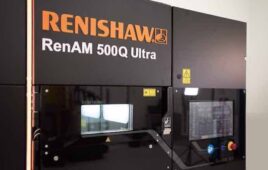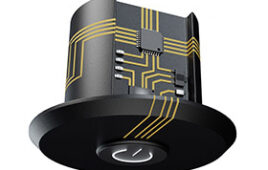 The Popp Group, based in Forchheim, produced 3D printed door hinges to help a customer in the medical technology sector reduce manufacturing costs for medical cabinets as part of a cost-down procedure.
The Popp Group, based in Forchheim, produced 3D printed door hinges to help a customer in the medical technology sector reduce manufacturing costs for medical cabinets as part of a cost-down procedure.
“Our aim was to reduce production costs by producing an adjustable hinge for which many identical parts can be used,” explains Holger Ried, technical product designer responsible for the project at the Popp Group. “A large amount of money can be saved already in the development phase.” The Popp Group has a lot of experience in the manufacturing of furniture parts, particularly since the company has its roots in the furniture manufacturing business.
Many hand drawings were made before the final product was designed and the general direction defined. The drafts were then designed in 3D with SolidWorks, in order to prepare for the later printing in PLA plastic.
The Popp Group always printed several function models at the same time as prototypes for the customer and for testing, and so that these could also be presented as display models.
Compared to the previously used 3D printing process, this was much easier with the X400 3D printer from German RepRap. With its printing area of 40 x 40 cm (15,7 x 15,7 inches) it was possible to print several prototypes at the same time. Holger Ried: “Compared to 3D printing, laser sintering or CNC cutting is very expensive.” We had also tried printing in plaster, but stopped using this method on account of the relatively high maintenance costs of the printer.
3D printing enables any modifications required to be implemented quickly, and new models can be presented to the customer in the shortest possible time. Previously, it took often a week before a prototype could be supplied, only to then discover that the design had to be changed again. Depending on the model, the time required for prototype production today has fallen from one week to eight hours. The customers also appreciate the new possibility of quickly being able to hold prototypes in their hands.
“I had always been an advocate of 3D printing,” recalls Ried. The X400 from German RepRap soon became the preferred solution due to its price-performance ratio. The X400 has now been running almost continuously for at least six months.
Filed Under: 3D printing • additive • stereolithography, Industrial automation




